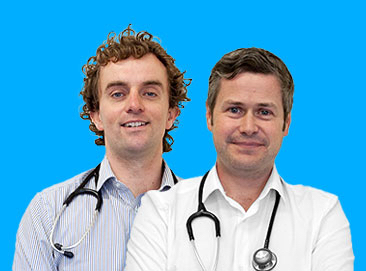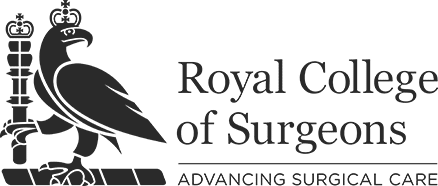We all know that our payslips include an amount for National Insurance Contributions but what is it, can it be reduced and, if not, is there anything that Doctors need to be mindful of when considering their National Insurance Contributions? In this blog we go into the basics of National Insurance to give everyone an understanding of what it is and how it is calculated before discussing circumstances in which you might be overpaying your contributions and what to do about it if you are. There is a huge amount to say about National Insurance – here we just stick to the basics and most important points; most people have some familiarity with Income Tax but a lot of people are completely in the dark when it comes to one of the biggest expenses they’ll pay through their lives. Everything here is up to date as of the day of writing the article but of course things are subject to change!!
About National Insurance Contributions (“NIC”)
NIC is a very important money-raiser for the Government bringing in around one-fifth of total Government revenue. The National Insurance Contributions Office (or “NICO”), a division of HM Revenue and Customs, is tasked with the collection of NIC. As most of you will know NIC for employees is collected via the PAYE system and deducted from your pay cheque each month.
National Insurance Contributions were created to provide funding for the Social Security system – retirement benefits such as the state pension, Universal Credit and so on. If the amount raised by NICO through NIC is insufficient to cover the needs of the benefits system, the Treasury makes up the shortfall. You need to pay National Insurance to be able to claim some of these benefits and if you don’t have a full National Insurance record you may not be eligible for the full amount. So, for example based on my age and pensionable age, I need 28 years of contributions in order to be entitled to the full state pension when I retire.
Every employee pays National Insurance from the day they turn 16 and will stop paying when they reach pensionable age. So, if you work past your pensionable age you shouldn’t have to pay National Insurance.
Join 30,000 doctors and receive free, exclusive, financial CPD for doctors in your inbox.
Medics’ Money is run by doctors and finance experts, for doctors. Our free financial CPD gives you all the knowledge you need to take control of your finances.

The Types of National Insurance
There are six types of National Insurance but I’ll only mention three here (note that all figures given below are for the tax year ending 5 April 2025 i.e. 2024/25.
For employees the key type of National Insurance is called Class 1 Primary National Insurance which is paid on earnings from employment. Class 1 Secondary National Insurance is paid by employers on these earnings (it is these employer contributions that account for the majority of the revenue raised from NIC.)
For self-employed individuals (which may be relevant for those locuming for example) the following are relevant:
- Class 2 National Insurance is paid by self-employed people if applicable and is charged at a flat weekly rate which is currently £3.45 per week.
- Class 4 National Insurance is paid on profits from trade
Calculating Your Employee NIC
Class 1 Primary contributions are paid by employees on earnings in an “earnings period” which for most UK employees including doctors is a monthly earnings period – i.e. we receive our salary etc on a monthly basis.
For employees who receive their remuneration monthly, like us, no NIC is charged on the first £1,048 per month of an employee’s earnings. This is called the “primary threshold” (PT) and you can think of it like a Personal Allowance but for NIC. On earnings between £1,048 per month and £4,189 per month (i.e. £3,141), the main rate of Class 1 NIC is 8% (this was 12% until 6th January 2024). The monthly limit of £4,189 is called the “upper earnings limit” (UEL). Employees also pay Class 1 NICs at the additional rate of 2% on earnings in excess of the upper earnings limit ie above £4,189 per month.
Using yearly numbers, the first £12,570 of earnings in the tax year is charged at 0%, between £12,570 and £50,270 is charged at 8% and above £50,270 at 2%.
It might be easiest to give an example: imagine a doctor’s payslip on 23 November 2024 shows a doctor’s basic pay totalling £5,753.01 and an NIC bill for that month of £282.56. How is this number derived?
In the month, for earnings up to £1,048 NIC is charged at 0%. That leaves £4,705.01 that is chargeable to NIC. The next £3,141 is chargeable at 8% so that comes to £251.28. Finally the remainder after the £3,141 is charged at 2% so £4,705.01 – £3,141 = £1,564.01 @ 2% = £31.28
The total National Insurance Contributions that the doctor then owes is £251.28 + £31.28 = £282.56 which is the NIC amount shown on the payslip. We don’t expect you to do this calculation – we just wanted to show you how it is calculated as part of our goal to empower all doctors to understand their finances better.
What about Self-employed Doctors?
GP Locums and those going into private practice may be self-employed instead of employees. In that case the above still applies with two differences. Firstly, National Insurance is charged on profits made, this is called Class 4 National Insurance. Secondly on profits between £12,570 per year and £50,270, the main rate of Class 4 NIC is 6%, so slightly lower than for employees (8%).
Class 2 NIC has been changed significantly and abolished for most of the self-employed. Class 2 NIC was set as a weekly amount of £3.45 that the self-employed usually had to pay as a way to get an NIC contribution towards their state pension even if their profits were too low to pay Class 4 NIC on their profits or if they made a loss. Effectively, from 6 April 2024, a person with profits in excess of £12,570 no longer has to pay class 2 NIC. Where profits are at least £6,725, the person continues to receive access to contributory benefits (eg, the state pension). Where profits are under £6,275 or a loss is made, the person can make voluntary class 2 NIC at the rate of £3.45 per week in order to get access to contributory benefits.
For completeness, companies do not pay NIC but note that if a salary is paid out of the company in order to extract the money from the company, Employer’s NIC may need to be paid.
Can I reduce my NIC bill like I can my Income Tax bill?
Unfortunately, unlike income tax, employees cannot deduct their professional expenses or other costs to reduce the amount of NIC that is payable.
Anything that reduces the profits of a self-employed individual, however, should reduce the liability to Class 4 NIC.
Is there anything else important to know about NIC?
Yes. For employees, keep an eye on your NIC if you have more than one job in the tax year, for example if you locum. As we said above NIC is charged against salaries for employed doctors and against profits for self-employed individuals. In the 2024-25 tax year the first £12,570 of your salary / self-employed profits will be free from NIC but between £12,570 and £50,270 of NIC is charged at 8% on salaries and 6% on self-employed profits. Above £50,270 2% NIC is charged.
Firstly, the rates are charged per employment on total amounts. If you work for an employer and get multiple payslips e.g. a main payslip and a locum payslip then the total NIC you pay over the year should not exceed 8% between £12,570 and £50,270 and 2% above this – so if you already have a salary over £50,270 you should be paying 2% on the locum pay and not a higher amount.
Secondly, unlike for income tax, for National Insurance there are separate limits for jobs with different employers (assuming no connection between the employers). If you work for a different employer and receive less than £12,570 then no National Insurance should be payable. So if you do locum work for a different trust and earn less than £12,570 you should not pay National Insurance on this pay.
Thirdly, if an individual has substantial earnings from two employments, or both earnings as an employee and profits as a self-employed individual, there is a maximum cap which applies each year. Unfortunately, if you work for multiple different employers, they may charge you as if that job was your only one for NIC.
An example might make this clearer. Suppose you work for one employer for £80,000, you should pay NIC as follows:
£0 – £12,570 – 0% NIC £0
£12,570 – £50,270 – 8% NIC £3,016.00
>£50,270 – 2% NIC £594.60
Total NIC for Dr 1 £3,610.60
Now imagine you have two jobs – both pay £40,000 (so your total is £80,000 just like the first doctor)
Job 1 NIC:
£0 – £12,570 – 0% NIC £0
£12,570 – £40,000 – 8% NIC £2,194.40
Job 2 NIC:
£0 – £12,570 – 0% NIC £0
£12,570 – £40,000 – 8% NIC £2,194.40
Total NIC for Dr 2 £4,388.80
You can see that Doctor 2 has overpaid NIC by £778.20 because both employers have charged NIC on the individual salary ignoring the other. This may not happen but watch out for it.
The above may also be the case if you have both employed and self-employed income – it is the total that matters, not the income received from any one source so you may overpay in this situation too. In this instance, things get complicated (because some NIC is charged at 8% and some at 6% but again above £50,270 only 2% should be charged) though if you are self-employed everything should sort itself out when you file your self-assessment tax return.
If you think you have overpaid NIC then you can contact the National Insurance Contributions Office (NICO) for help. They usually send you a form to fill out that asks for your salary and amounts of NIC paid for each employment (oddly as they really should already have this information) and, if you have overpaid, they will refund you.
There is no deadline if you’re reclaiming NIC because of more than one job. The deadline for claiming an NIC repayment if an error has been made (such as paying at the wrong rate, or your employer has made an error) is 6 years from the end of the year in which the contribution was paid.
Conclusion
This blog is all about our aim to empower doctors to understand their finances and where their money is going. Most of this is informational – but definitely watch out for situations where you may be overpaying your NIC and if you decide to be self-employed make sure you budget for 6% of your profits (and then 2% over the upper threshold) being payable to NICO.
Join 30,000 doctors and receive free, exclusive, financial CPD for doctors in your inbox.
Medics’ Money is run by doctors and finance experts, for doctors. Our free financial CPD gives you all the knowledge you need to take control of your finances.









